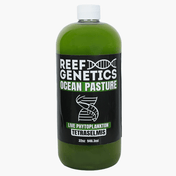Chalice corals are among the most captivating and sought-after species for reef aquarium enthusiasts. Known for their vibrant colors and intricate patterns, these corals add a stunning visual appeal to any marine setup. However, caring for chalice corals requires specific knowledge and dedication to ensure they thrive. In this comprehensive guide, we will unlock the secrets of chalice coral care, covering everything from selecting the right species to maintaining optimal tank conditions.
What is Chalice Coral?
Chalice corals belong to the family Pectiniidae and are known for their flat, plate-like structures and vivid coloration. These corals can display a range of hues, including blues, reds, greens, and purples, often with striking patterns and textures.
Types of Chalice Corals
There are several types of chalice corals, each with unique characteristics. Some popular varieties include the Hollywood Stunner, Mycedium, and Oxypora. These types vary in growth patterns, colors, and care requirements.
Natural Habitat
Chalice corals are typically found in the Indo-Pacific region, thriving in shallow, sunlit waters. They attach to rocky substrates and can grow into large colonies over time.
Benefits of Keeping Chalice Corals
Chalice corals are renowned for their vibrant and diverse colors, making them a focal point in any aquarium. Their unique shapes and patterns add depth and visual interest to your marine setup.
Adding chalice corals to your aquarium increases biodiversity, contributing to a more balanced and healthy ecosystem. They offer habitat and shelter to various marine organisms.
Choosing the Right Chalice Coral for Your Aquarium
Color & Size Variations
When selecting chalice corals, consider the color variations that will best complement your existing tank setup. Chalice corals come in a spectrum of colors, so you can find options that match your aesthetic preferences.
Chalice corals can vary significantly in size. It's important to choose corals that will fit well within your aquarium's dimensions and leave room for growth.
Compatibility with Other Corals
Ensure that the chalice corals you choose are compatible with other corals in your tank. Some species can be aggressive, so it's crucial to research their behavior before adding them to your aquarium.
Setting Up Your Aquarium for Chalice Corals
Lighting Requirements
Proper lighting is crucial for the health of chalice corals. LED lights are a popular choice as they can be adjusted to provide the appropriate spectrum and intensity. Aim for moderate to high lighting.
Water Flow
Chalice corals prefer moderate water flow. Too much flow can cause stress and tissue damage, while too little can lead to poor health. Use adjustable powerheads to create an ideal flow environment.
Water Parameters for Chalice Coral Care
Ideal Temperature
Maintain the tank temperature between 75-80°F (24-27°C) to provide a stable environment for your chalice corals.
pH Levels
Keep the pH level between 8.1 and 8.4. Regular testing and adjustments are necessary to maintain these levels.
Salinity
Chalice corals thrive in salinity levels of 1.023-1.025 specific gravity. Use a refractometer to monitor and adjust salinity accurately.
Nutrient Levels
Ensure that nitrate and phosphate levels are kept low to prevent algae growth and maintain coral health. Aim for nitrate levels below 5 ppm and phosphate levels below 0.03 ppm.
Lighting Needs for Chalice Corals
LED lights, T5 fluorescents, and metal halides are suitable for chalice corals.
LED lights are preferred for their energy efficiency and customizable settings.
Chalice corals require moderate to high light intensity. Avoid placing them directly under strong lights initially; instead, acclimate them gradually to prevent light shock.
Maintain a photoperiod of 8-10 hours of light per day. Use timers to ensure consistency and simulate natural light cycles.
Feeding Chalice Corals
Natural Diet
In the wild, chalice corals obtain nutrients from plankton and dissolved organic matter. They also rely on symbiotic zooxanthellae algae for energy through photosynthesis.
Supplementary Feeding
Supplement their diet with meaty foods such as brine shrimp, mysis shrimp, and finely chopped seafood. Use coral-specific foods like benepets or reefroids for additional nutrients.
Feeding Frequency
Feed chalice corals 2-3 times per week. Avoid overfeeding, as this can lead to poor water quality and algae growth.
Acclimating Chalice Corals to Your Tank
Drip Acclimation Method
Use the drip acclimation method to introduce new chalice corals to your tank. This involves slowly introducing tank water to the coral's transport container over 1-2 hours.
Importance of Gradual Acclimation
Gradual acclimation helps prevent shock and stress, allowing the coral to adjust to the new water conditions safely.
Placing Chalice Corals in the Aquarium
Place chalice corals on the tank floor or lower rockwork, where they receive moderate light and flow. Avoid high-flow areas that can cause damage.
Keep chalice corals away from aggressive species that can sting or overgrow them. Maintain adequate space between corals to prevent territorial disputes.
Secure chalice corals in place to prevent them from being dislodged by water flow or tank inhabitants. Use reef-safe glue or epoxy for attachment.
Maintaining Chalice Corals
Regular Monitoring
Regularly monitor the health of your chalice corals. Look for signs of stress, color changes, and tissue recession, which may indicate poor water conditions or disease.
Cleaning the Tank
Maintain a clean tank environment by performing regular water changes and cleaning the substrate and equipment. This helps keep water parameters stable and reduces the risk of disease.
Checking for Pests
Inspect chalice corals for pests such as flatworms, nudibranchs, and algae. Use coral dips and quarantine new additions to prevent infestations.
Common Chalice Coral Pests and Diseases
Identifying Pests
Common pests include red bugs, flatworms, and aiptasia. Look for signs such as tissue damage, discoloration, and unusual growths.
Treatment Options
Treat pests with targeted medications or coral dips. For example, flatworm treatments and iodine-based dips can effectively eliminate many common pests.
Prevention Strategies
Prevent pests by quarantining new corals, maintaining optimal water conditions, and regularly inspecting your tank.
Chalice Coral Propagation
Methods of Propagation
Propagate chalice corals through methods such as cutting and grafting. This allows you to grow new colonies and share them with other hobbyists.
Tools Needed
You'll need tools such as bone cutters, scalpels, and coral glue. Ensure all tools are sterile to prevent infections.
Step-by-Step Guide
- Select a healthy parent coral.
- Cut a small fragment using a sterile tool such as a pair of bone cutters.
- Attach the fragment to a substrate or a frag plug with coral glue.
- Place the new fragment in a low-flow, moderate-light area.
- Monitor the fragment for growth and health.
Troubleshooting Chalice Coral Problems
Signs of Stress
Common signs of stress include closed polyps, faded colors, and tissue recession. Address these issues by checking water parameters and adjusting care routines.
Color Loss
Color loss can result from inadequate lighting, poor water quality, or nutrient deficiencies. Enhance colors by optimizing lighting and providing balanced nutrients.
Tissue Recession
Tissue recession is often caused by pests, poor water conditions, or physical damage. Treat underlying issues promptly to prevent further damage.
Enhancing Chalice Coral Colors
Optimal Water Conditions
Maintain pristine water conditions to enhance coral colors. Regularly test and adjust water parameters for optimal health.
Lighting Adjustments
Adjust lighting intensity and spectrum to highlight the natural colors of your chalice corals. Use blue and actinic lights to bring out vibrant hues.
Nutritional Supplements
Provide nutritional supplements such as amino acids and trace elements to support vibrant coloration and overall health.
Compatibility with Other Corals and Fish
Peaceful Tank Mates
Choose peaceful tank mates that will not disturb or damage chalice corals. Suitable options include small reef-safe fish and non-aggressive invertebrates.
Potential Aggressors
Avoid placing chalice corals with aggressive species such as certain angelfish and large tangs. These fish can nip at corals and cause stress.
Community Setup
Create a harmonious community by selecting compatible species and maintaining adequate space between corals. This reduces stress and promotes healthy growth.
Seasonal Care Tips
Adjusting Care Routines
Adjust care routines seasonally to account for changes in temperature and light. Ensure stable conditions to prevent stress.
Seasonal Feeding Patterns
Increase feeding during periods of growth and reproduction. Adjust feeding frequency and types of food based on the season.
Monitoring Changes
Regularly monitor changes in coral behavior and health. Seasonal variations can impact coral growth and require adjustments in care.
Frequently Asked Questions about Chalice Coral Care
How often should I feed my chalice corals?
Feed your chalice corals 2-3 times per week to ensure they receive adequate nutrition without overfeeding.
What is the ideal lighting for chalice corals?
Chalice corals thrive under moderate to high lighting. LED lights are preferred for their customizable settings and energy efficiency.
How can I enhance the colors of my chalice corals?
Enhance colors by maintaining optimal water conditions, providing proper lighting, and using nutritional supplements such as amino acids.
What should I do if my chalice coral shows signs of stress?
Check water parameters, adjust lighting, and ensure proper water flow. Address any underlying issues such as pests or nutrient imbalances.
Are chalice corals aggressive towards other corals?
Some chalice corals can be aggressive. Maintain adequate space between them and other corals to prevent territorial disputes.
Can I propagate my chalice corals at home?
Yes, you can propagate chalice corals using methods such as cutting and grafting. Ensure you use sterile tools and provide proper care for the new fragments.
Conclusion
Caring for chalice corals requires dedication, but the rewards are well worth the effort. By understanding their needs and providing optimal conditions, you can enjoy the vibrant beauty of these stunning corals in your aquarium. Remember to monitor water parameters, provide proper lighting and nutrition, and address any issues promptly to ensure the health and longevity of your chalice corals. Happy reefing!
























